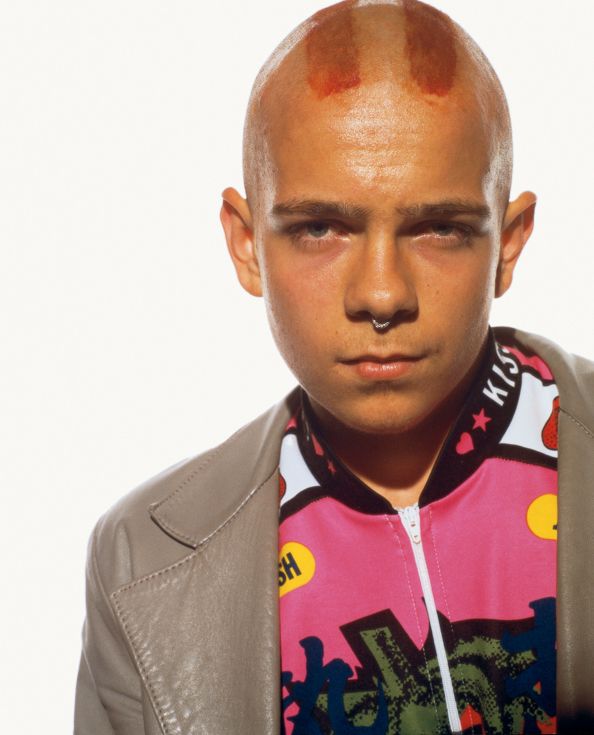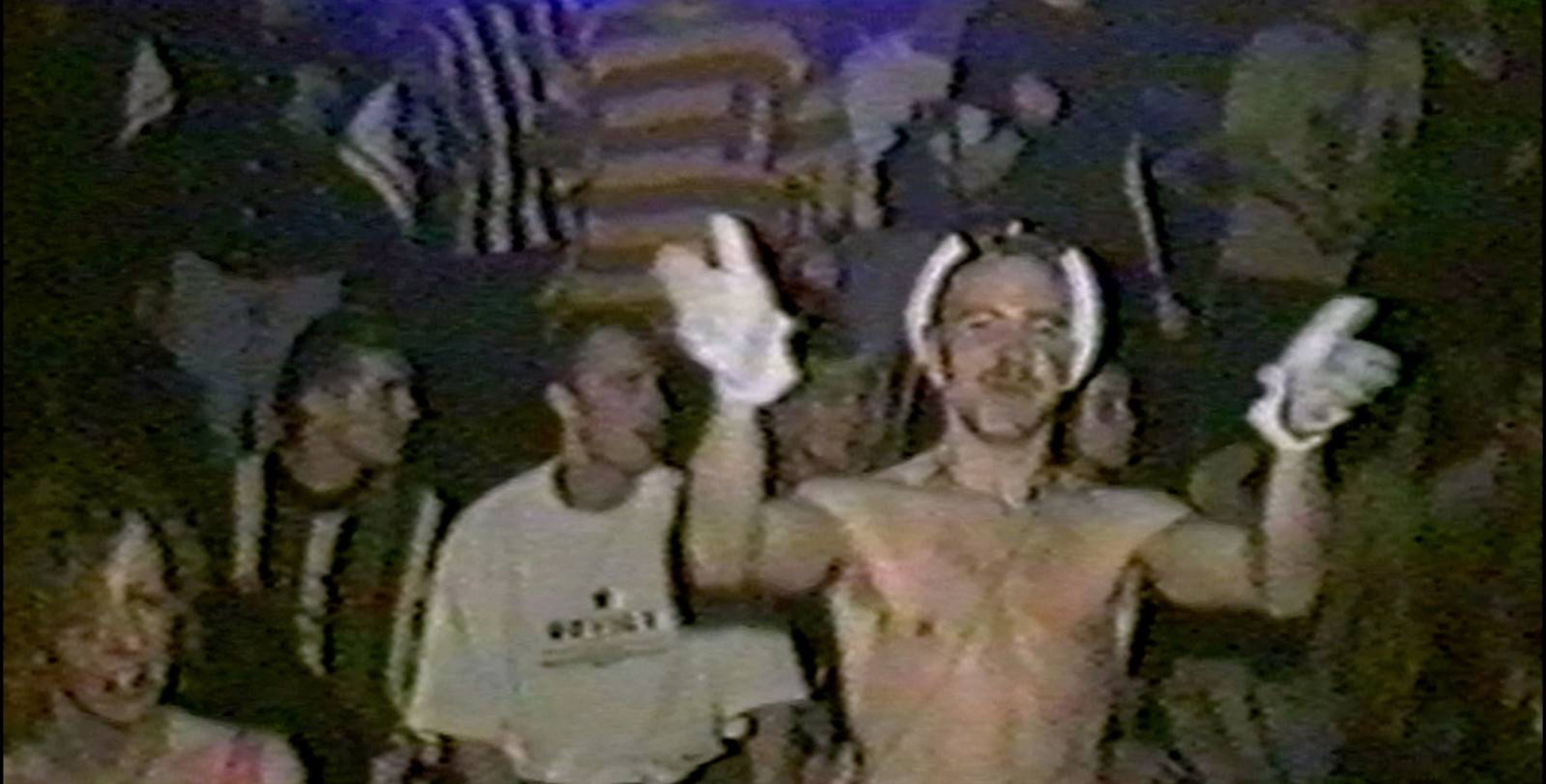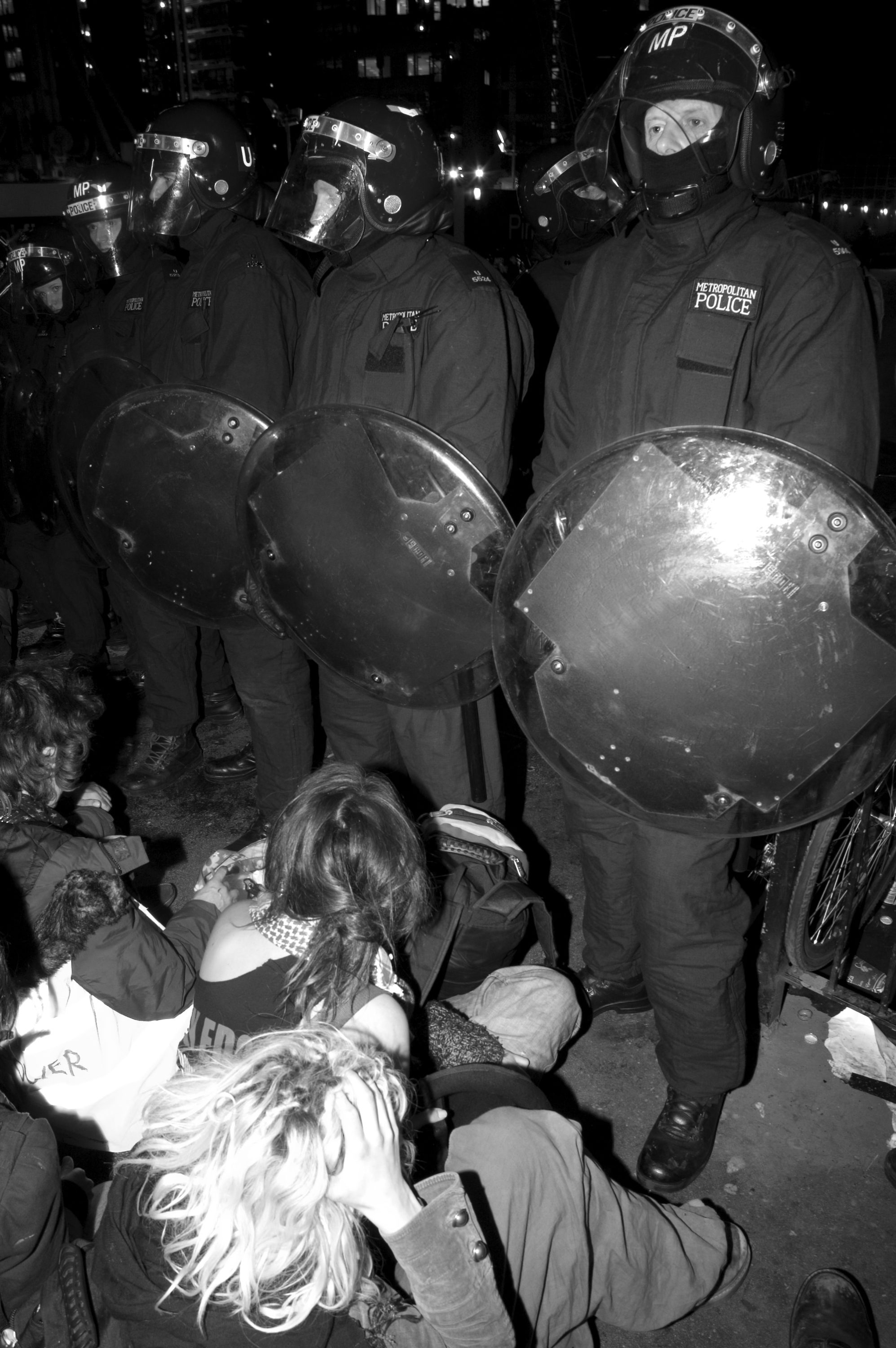SEANA GAVIN Spiral Baby
“Spiral Tribe, with their free and inclusive parties, succeeded in constituting an alternative public space, rather than just a secret one.”
Spaces of Democracy: Geographical Perspectives on Citizenship, Participation and Representation (2004)
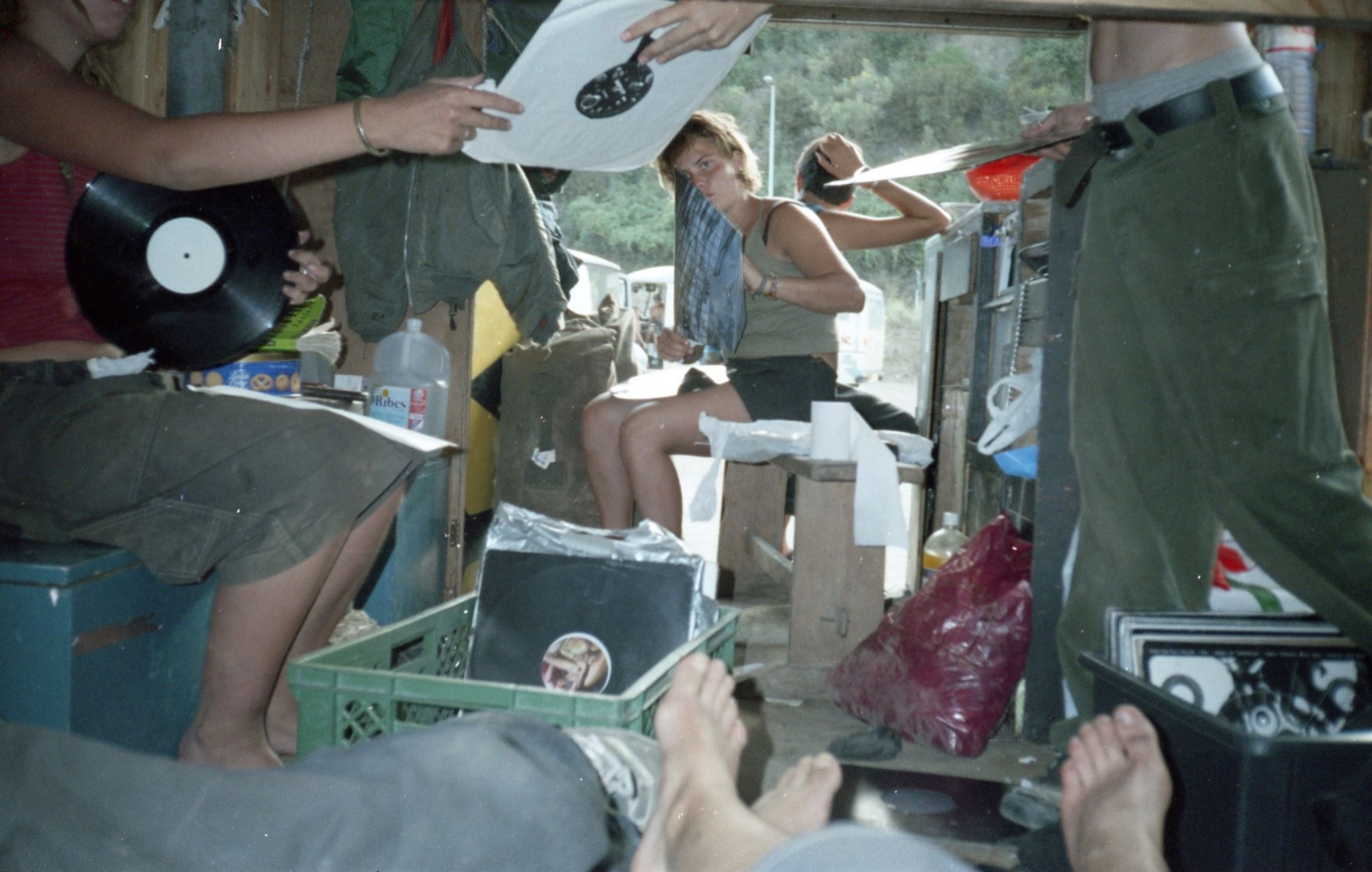
Spiral Tribe, now an arts and music collective known as SP23, was a West London free party sound system active throughout Europe and the UK in the 1990s and 2000s as organizers of parties and raves – including the high-profile Castlemorton Common Festival back in 1992, which crystallized the scene in the public eye. The young people who left their lives at home to travel with the group had a name, too: Spiral Babies.
Artist Seana Gavin was underage when she entered this world, following Spiral Tribe and their extended community caravan-style across Europe in friends’ RVs. Documentation of the underground was limited back then: cell phones were rare and camera-free, and the parties – and the drugs used there – illicit, hidden, fundamentally experienced in real time immersion. (Even if social media had existed in the late 1990s, these events were built to resist anything less than immediate.) Gavin, however, had a camera – sometimes disposable, always basic – which she used to preserve her memories of the scene and the formative years she spent within it. She also kept a diary and saved parties flyers, a personal archive of rave history that until recently remained unseen in her studio. Now, her images and collected ephemera are on public view for the first time at Paris’ galerie pcp, where the timely exhibition – and the times exhibited – prove resonant with the cultural realities of Europe today, 20 years later.
How did you get into the rave scene?
I came into the scene a year after the iconic Castlemorton festival. I was underaged and still at school at the time but outside of that most of my friends lived in squats and were all into alternative lifestyles. I regularly attended a club on Old Street called Whirl-Y-Gig, which was a breeding ground for young clubbers. The night would finish around midnight so I started going to raves afterwards to extend the evening. My first rave was a small Spiral Tribe party in West London in 1993. I danced continuously until the early hours and must have met everyone in the room. It felt like we were all connected somehow through the energy of the dancefloor and I thought I had stumbled into something totally new and exciting. I was hooked. My life began to evolve around the weekend-long parties. I started to meet all the crews that put on the parties, including Spiral Tribe. They soon left the UK and headed for France to put on parties across Europe and other UK sound systems followed suit. So for periods of time I would travel in friends’ mobile homes in convoy with the Spirals and other sound systems across Europe.
The club and rave culture of the 1990s is back in a big way, in fashion as well as art. What is it about the current climate that is drawing people back to this time?
I guess there are some parallels in the political climate. With Brexit hanging over us for the past 3 years, people are fed up and ready for change, especially in the UK. It feels like it’s a natural cycle though: there was free love and the hippy movement in the 1960s, then the anti-establishment Punk era in the 1970s. After things blanded out in the 1980s, the 90s brought Grunge, New Age travelers, and ravers. But subcultures haven’t existed in the same way since. Sadly, I don’t think they can. Nothing can be that underground for long –with the power of social media and the Internet, things move too fast. And after the 90s there was a long period of time where the youth seemed to be more materialistically motivated, aspiring to be reality TV stars. It was only a matter of time that something would bubble up again. Now the current youth are much more politically engaged again and socially conscious. So I think it’s natural for us to look back at an era where protest, alternative living, and subcultures were very present. It was a world where the Instagram and consumerist ideologies that dominate contemporary culture just didn’t exist. And I think all of us who remember that period of time look back with fond memories of that engagement.
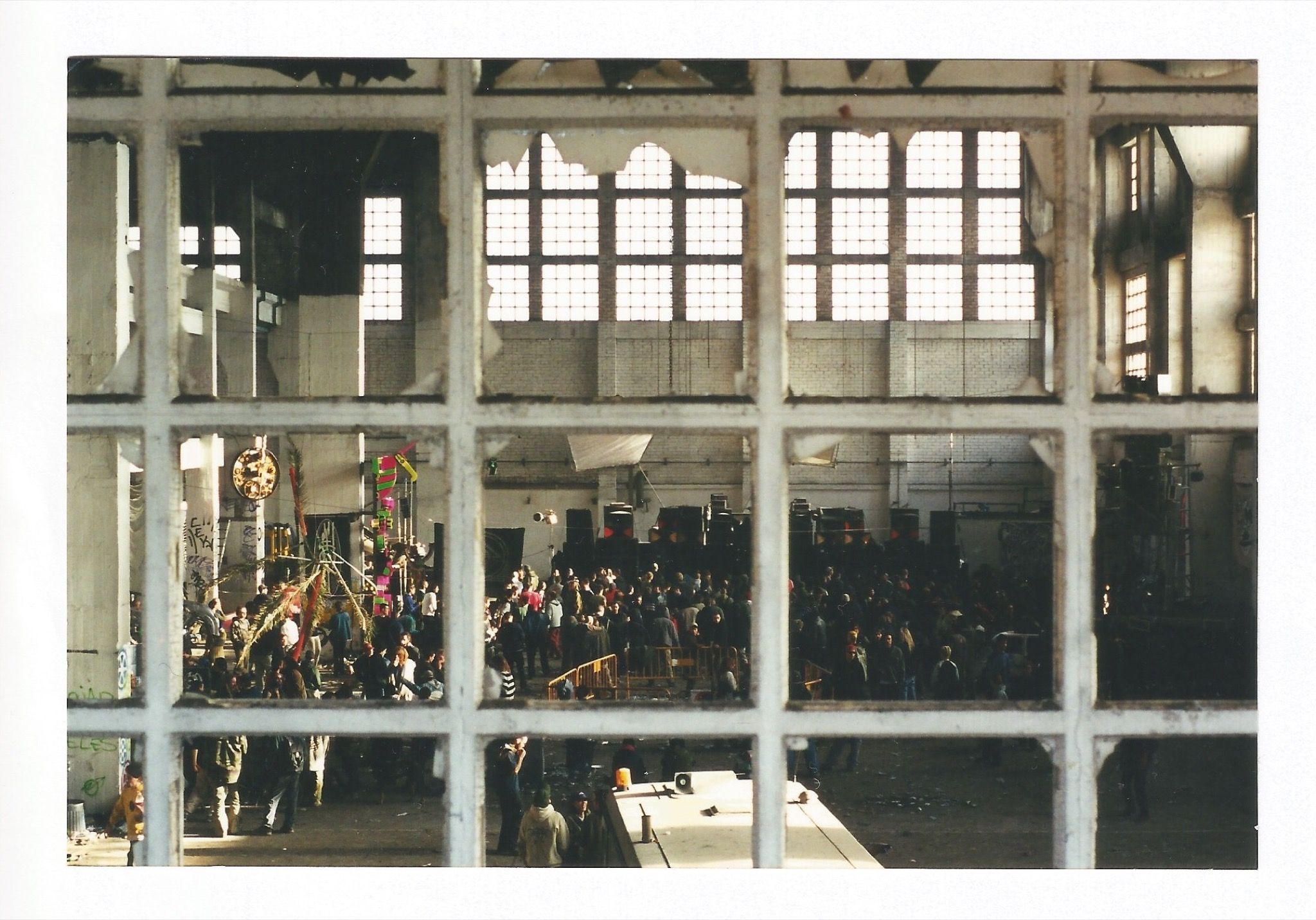
As an artist, you’ve been working primarily in collage – how does it feel to be exhibiting photographs?
It actually makes an interesting change for me. It shows a different side to who I am. Some of these photographs were taken 20 years ago, and for me, sharing and exhibiting them has been healing. These photos depict a period of my life that was hidden, pushed to the side. It makes me feel positive that the decade of my life spent in this scene has now turned into art.
The photography is more personal than my collage work, but there is some relationship between the two – I use old found photographic material in my collages. In both mediums I am very obsessed with color and light. I think you can sometimes tell with the photos that they come from the same pair of eyes. I studied photography as an elective during my degree at Camberwell, but I guess I have always been fascinated by photography. When I was a child I would obsessively look at family albums – I never got bored of looking at the same pictures. Looking back gave me so much joy. The albums always felt so precious. So the desire to capture the people and the world around me has always been there.
Were there moments from this time that you simply could not or did not want to document?
Yes, of course. I remember at a particular party near Barcelona in 1999 – known as “The end of the world party” – the police turned up after a few days to shut it down. They confiscated equipment and were quite brutal with their treatment of everyone there. When my friend and I started to drive off I made the mistake of trying to photograph the situation. The Spanish police were not happy. They stopped our vehicle and ripped the film out of my camera. Sadly that meant I had lost all the photos from that weekend. Not surprisingly, there was also a lot of excessive recreational drug use. You can see the essence and results of that in some of my photos. I wasn’t actively going around trying to capture images of people looking off their heads – it just happened unintentionally sometimes.
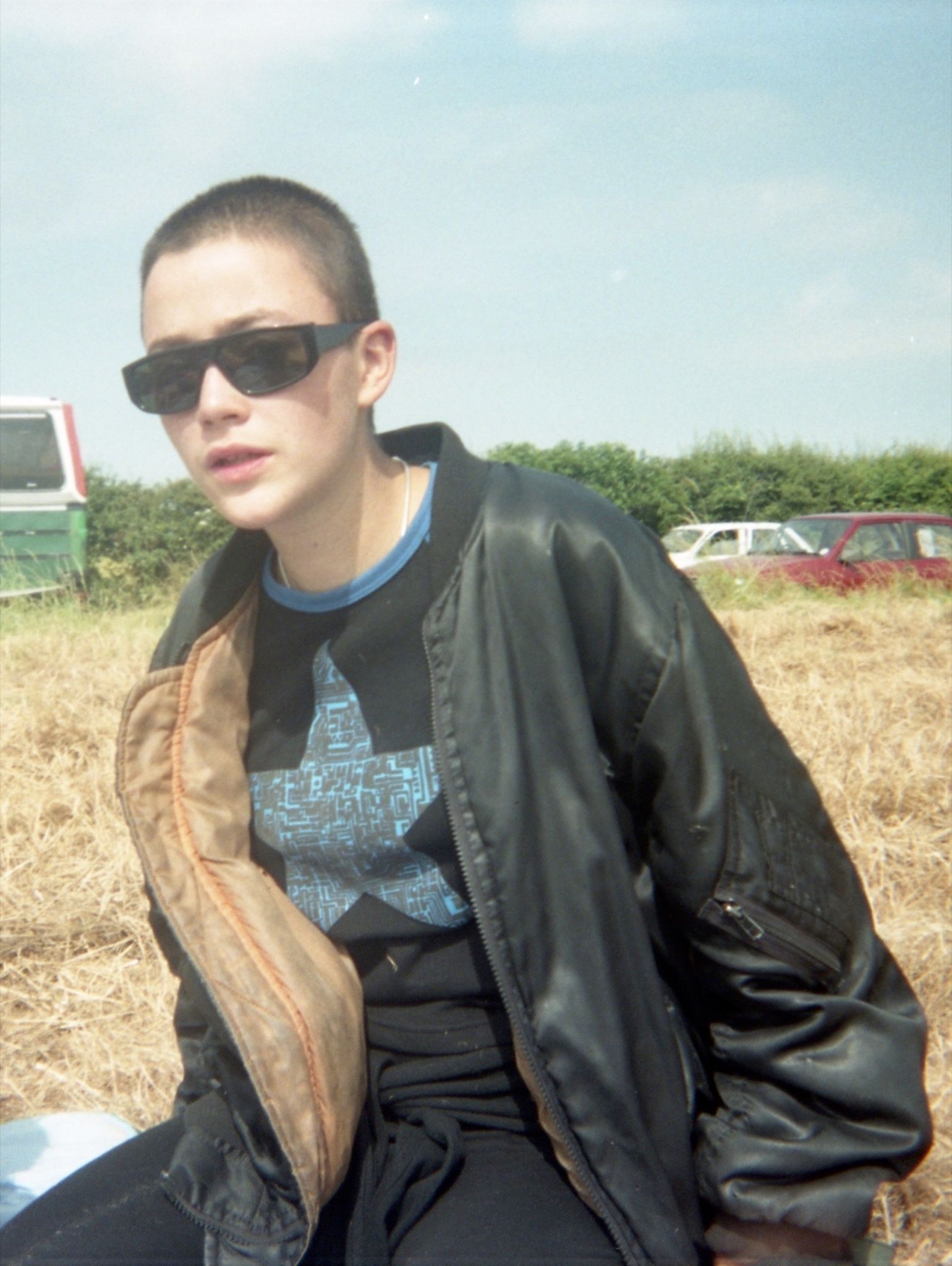
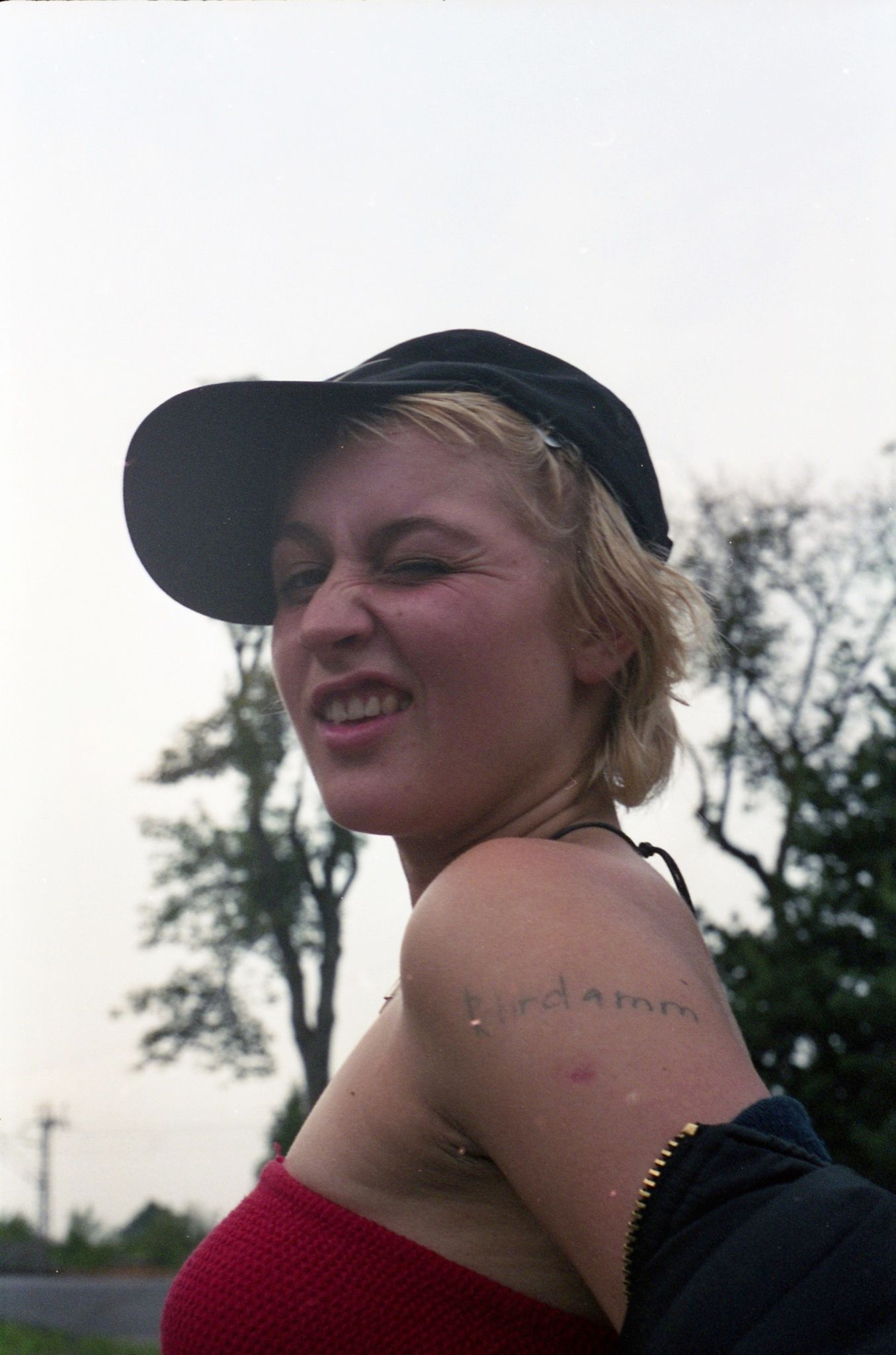
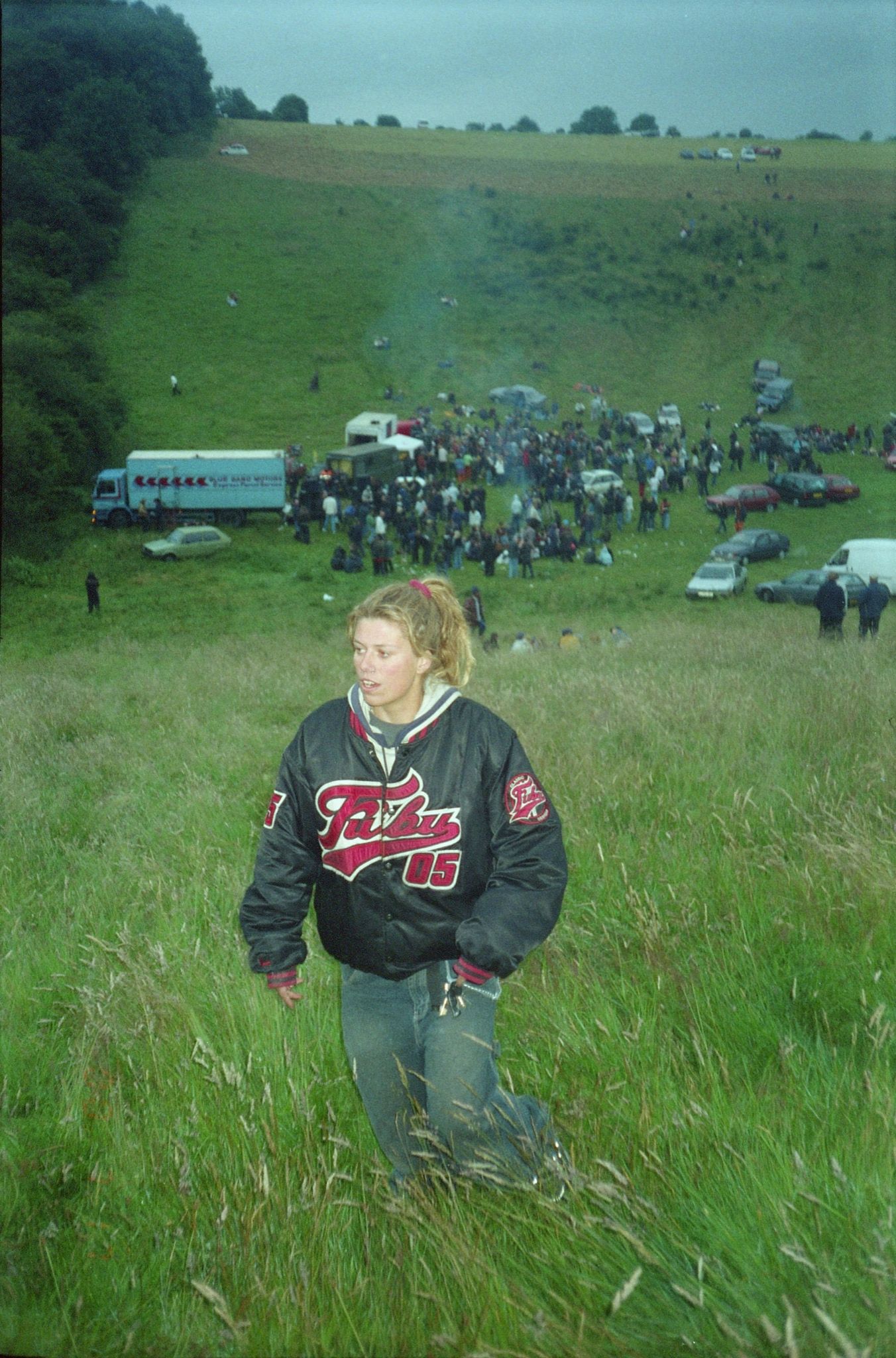
Can you tell us a bit about your approach to the medium – what you shot with, what approach, if any, you took to the subject matter, what you hoped to do with the results?
I started off with disposable cameras so I wouldn’t care if they got lost or damaged on a night out. But I was often disappointed with the end results. Then I switched to compact film cameras that were small enough to put in my pocket. It was the days before digital, so film was the only option! When I was traveling I would use a combination of the compact film and a manual 35mm camera, something quite basic and simple – I couldn’t afford an expensive one at the time. I would just have the urge to document, to take pictures to remember the experience. At the time I felt that the memories might fade if I didn’t have the photos. It was all very natural, and not at all posed. I just wanted to capture the feeling and reality of what was around me. At the time, it was just for my personal record. I would put them into albums and keep all the negatives. I also couldn’t bring myself to throw away the flyers and diary entries. I guess it just felt like part of my history and development as a person. Maybe subconsciously I felt I would do something with them one day, though I never I expected I would have the opportunity to exhibit them in this way.
The images were taken all over Europe – was there a continuity or any notable differences between the scenes in different countries?
The main difference was that in Europe people had committed to a full-time nomadic lifestyle. To find out about parties in London back then, there was a party line number to call on the night, in order to get the location. In Europe, flyers were handed out to give info about the next party or it was spread by word of mouth. But in every country the scene evolved from the same groups of people, so the core was fundamentally the same. Local people would also attend the parties. Spiral Tribe’s and the other sound systems’ ethos was about the freedom to party, so everyone was welcome.
Photographer Wolfgang Tillmans has spoken and made work about how important the freedom to move around freely in Europe was at this time – and the threat of losing that freedom with the current shifts in the EU, with Brexit in particular. To what degree do you think this scene was important in catalyzing a sense of European identity for a particular generation?
For me it was very much a unifying European experience. Traveling by road rather than flying gave me an insight into different cultures across Europe. It was an education. During this time, sound systems formed in France, Spain, Holland, Italy, Germany, Austria. It became a community of Europeans travelers. The raves and Teknivals brought these people together through a common interest in freedom, an urge to break away from the norm. It’s heartbreaking to think the freedom to travel in this way could be soon jeopardized.
These were taken in a period without smart phones, etc., and you were moving around, attending underground events. Are you particularly informed by or nostalgic for the way things were communicated back then?
When I first entered this world only very few people had mobile phones. People had a different way of communicating then and had to stick to plans. But sometimes that meant you’d be standing around waiting for friends to show up. Also, there was less documentation back then, which makes it more mysterious and mystical. I stopped taking photos of friends on a night out when selfie culture took over. For me, it became overdone and lost its meaning. But as the digital world took over and everyone started to have a camera in their smart phone, I carried on printing off photos and keeping them enclosed in albums. If images are just floating abstractly on a device, they don’t feel real to me.
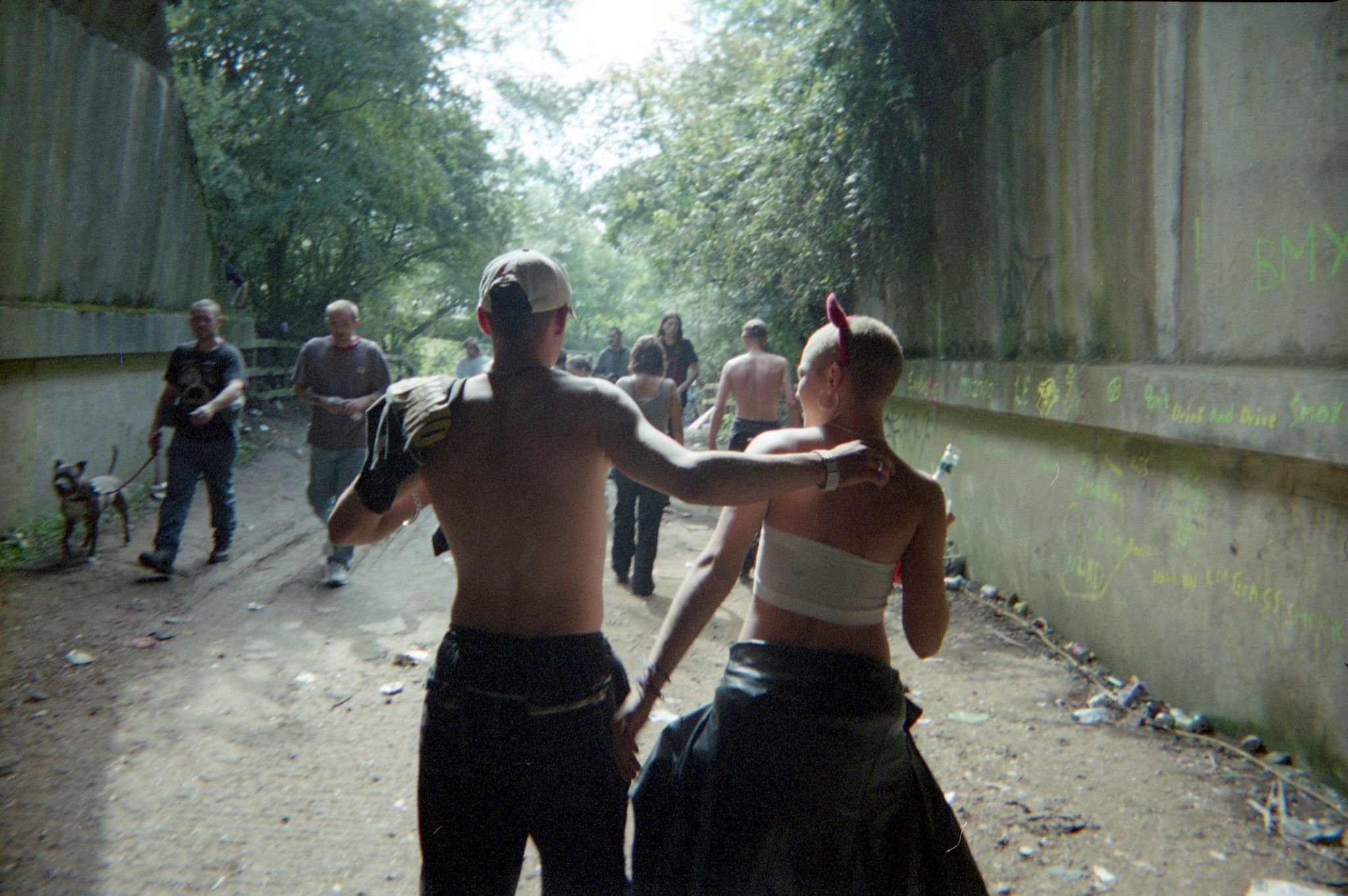
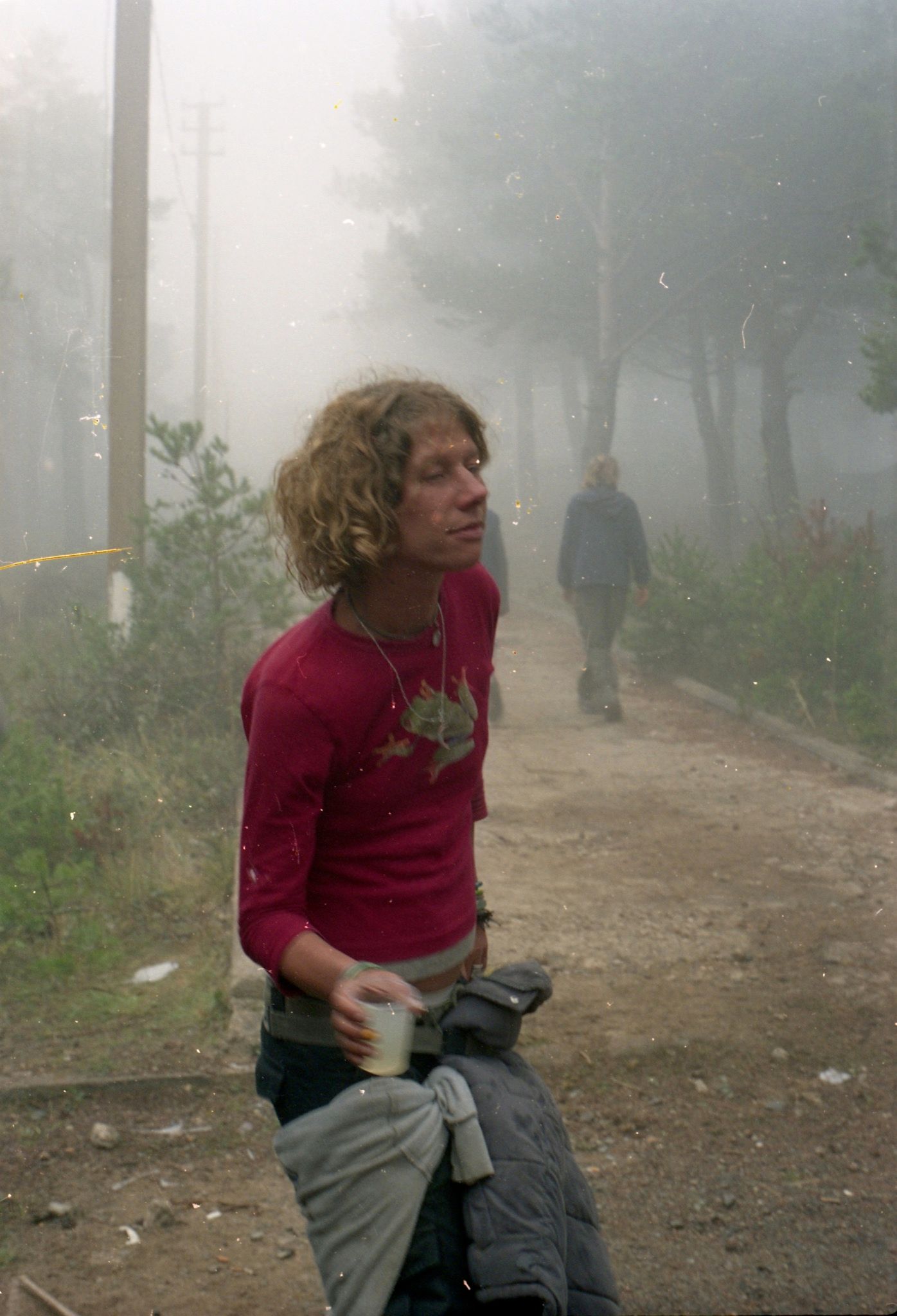
Were you ever afraid on any of these travels? Or was it always pure freedom or potential?
It all felt like an exciting adventure, you never knew what was around the corner. I was young and fearless. I put myself in danger on a weekly basis, but I felt I was somehow protected. I was existing on a different level, riding a wave. I’m sure I witnessed disturbing things, but it would bounce off me. The scene was hardcore, I always felt I had to be tough.
Are you still in touch with anyone from that scene or is anyone from that time? What are your current emotions around this time, personally and in terms of the collective?
I have only kept in touch with a handful of people. I distanced myself and drifted from that world after the loss of my best friend at a party in France. I couldn’t carry on in the same way – it changed me. I still hold a place in my heart for the friends I had back them – but life evolves. Mine went in a different direction. Doing this exhibition has brought up a full spectrum of emotions for me: nostalgia, sadness, discomfort, laughter, happiness… I had buried a lot of it after things ended in sadness and I wanted to dissociate myself with that world. But now that a long period of time has passed, I can see it through fresh eyes and appreciate what an important movement it was. I realize not everyone had access to it or witnessed it in the way that I did, and I am happy to share that. When I started going through the archive, along with the diary entries which I’ve included in the show, it really transported me back. It almost feels like yesterday. Time is a funny thing.
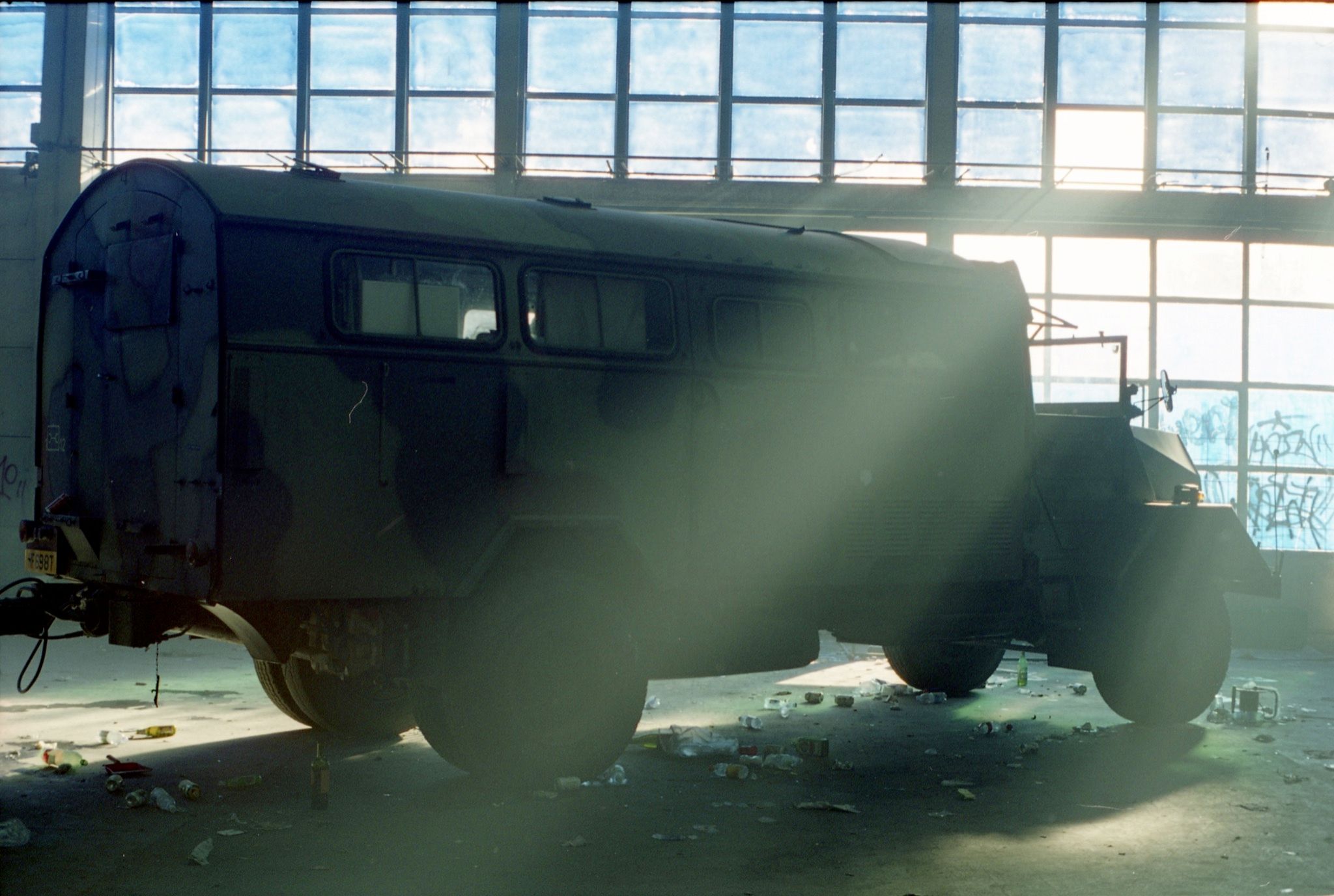
Credits
- Photography: Seana Gavin
- :
